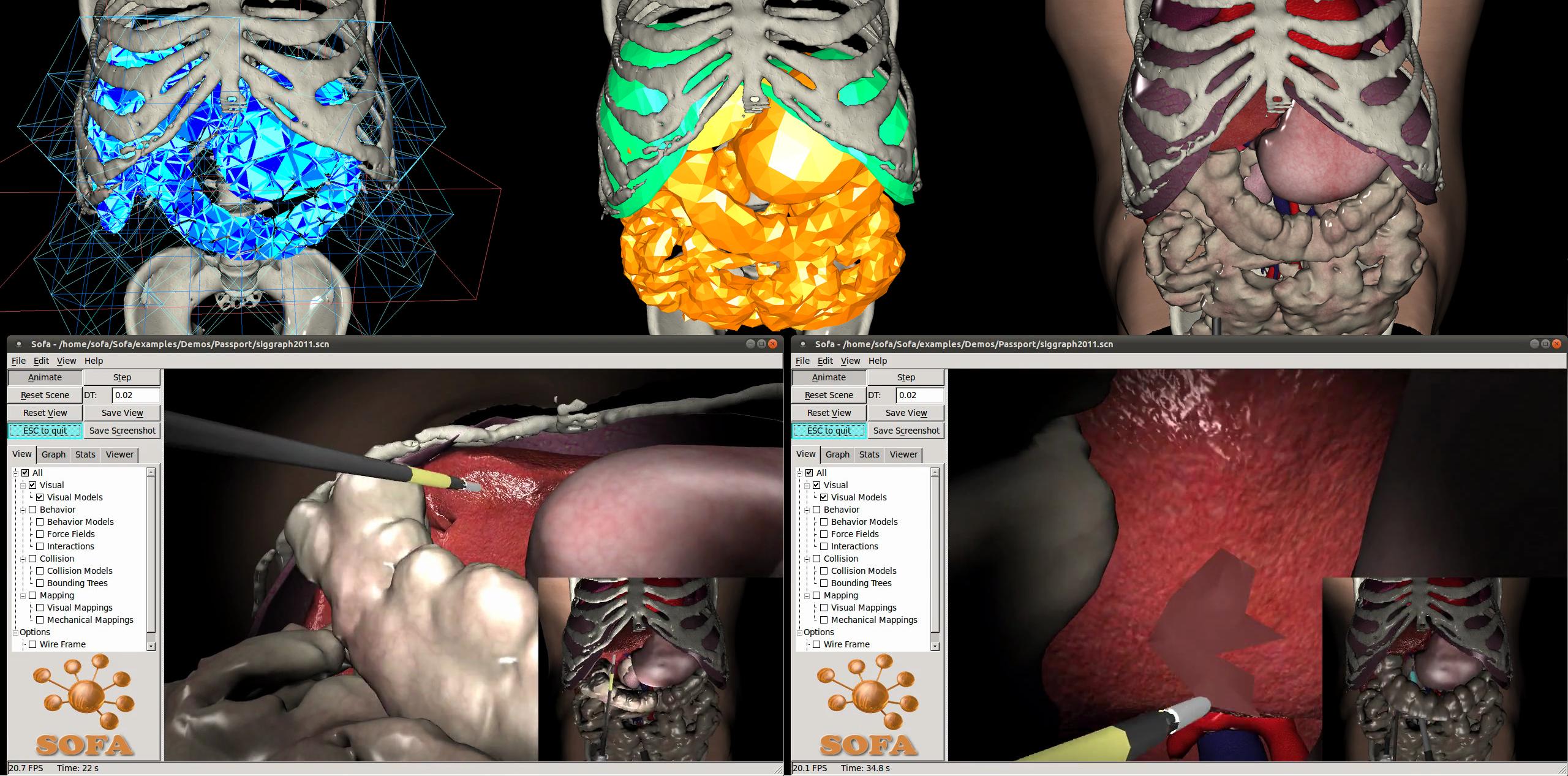Section: New Results
Interactive Simulation of Liver Resection PASSPORT demonstration at SIGGRAPH
The 3-year EU PASSPORT project is being finalized. In this context, we created a GPU-based interactive simulation of laparoscopic liver resection that was selected for SIGGRAPH Real Time Live! [21] . While similar medical simulators have been developed in the past, this demonstration rely on advanced methods and the computational power of today GPUs to simulate multiple organs with high-resolution deformations and collisions in real-time. We use detailed meshes generated from segmented CT scans, facilitating the reproduction of patient-specific scenarios, as is necessary for the pre-operative rehearsal of complex or risky medical cases. In the presented application, the user can examine the mechanical and collision models, and the generated contacts while the simulated patient is breathing. He can manipulate a laparoscopic instrument to navigate through the abdominal cavity, push on organs and perform a thermal ablation.
|
While similar medical simulators have been developed in the past 10 years, this demonstration is based on recently proposed methods: high-resolution Finite Element Model (FEM) with implicit time-integration implemented on GPU [1] , volume contact constraints [2] , an efficient numerical solver based on asynchronous preconditioning [17] , as well as improvements in visual and haptic rendering. These methods allow to simulate in real-time all organs in the abdominal cavity using a improved level of precision compared to previous works. The FEM formulation enables to reproduce specific material properties. Contacts are handled by precise constraints with frictions on detailed surface meshes. Both methods support topological changes efficiently, as demonstrated by performing a resection of a portion of a liver, an important step in surgical procedures performed to remove cancerous tumors. This work was presented at SIGGRAPH 2011 [21] .



